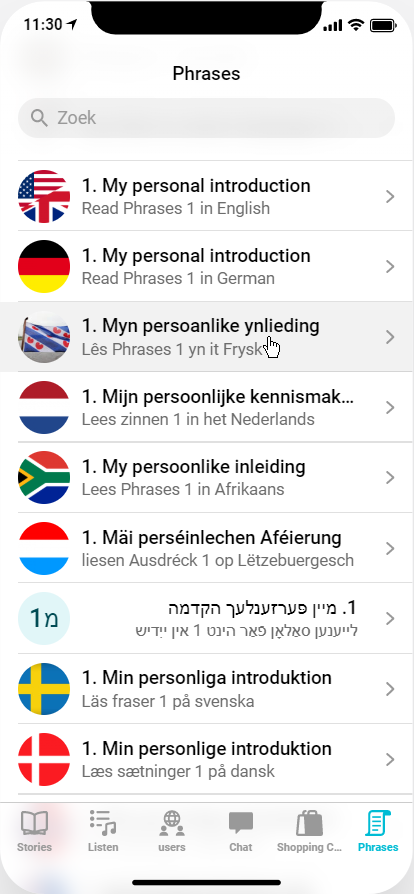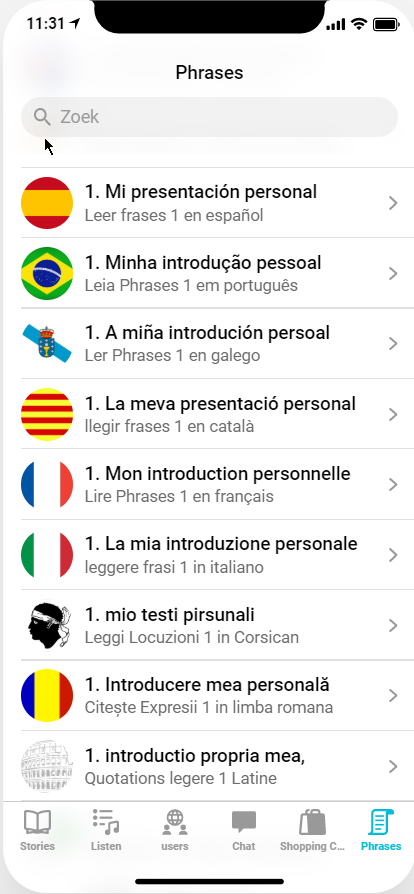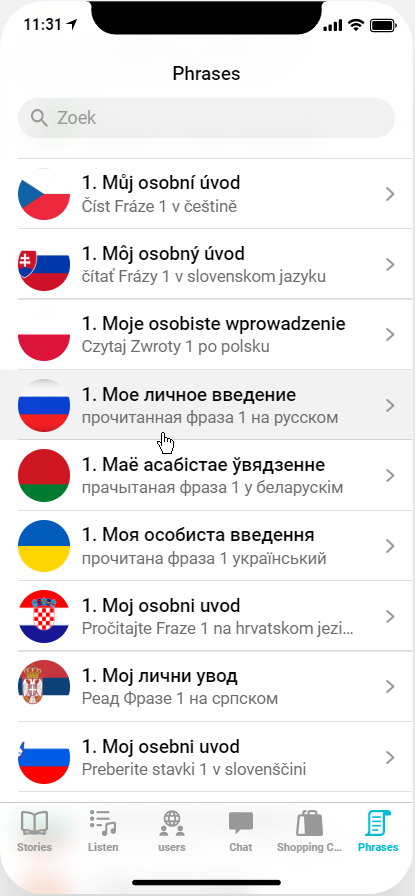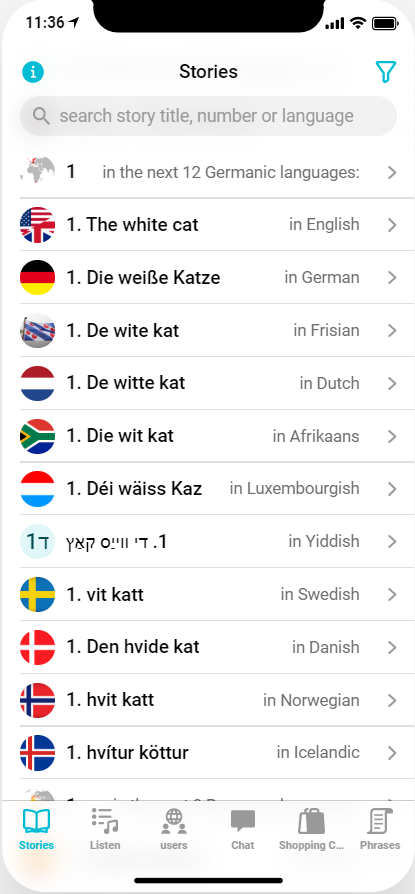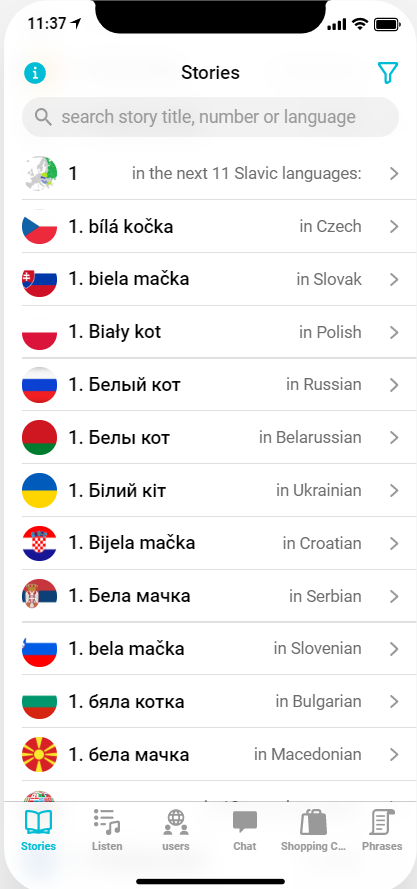The past few days I continued my daily ‘efforts’ listening to the news in French, Spanish, German, Italian and Swedish, while practicing a few sentences in those languages with people I met during the Polyglot Gathering 2020. Further on, I mostly worked on a new language learning app, that I will share more about in a bit (cliffhanger!) I started today, like many others, on this multilingual multi-screen page, I’m listening to the Spanish news about the demonstrations in relation to the tragic death of George Floyd and of course, the continuous reopening of everything worldwide after national lockdowns. As I need some active practice, I decided to write this in the target language.
40 May Learning Spanish while listening to the Spanish news and weather
El hombre del tiempo he escuchado mencionar 40 de mayo. No entendí bien la frase, entonces lo busqué.
Hasta el 40 de mayo no te quites el sayo.
refranero español para designar una fecha avanzada de la primavera en la que hace buen tiempo. Se refiere al 9 de junio.
Tal y como se hace referencia en la época en que desaparece completamente el tiempo invernal por el más cercano al veraniego, se apunta también acerca de la necesidad de prevenir los constipados por desabrigo. Igualmente es una frase periodística relacionada con la meteorología usada en medios de comunicación escrita, al igual que televisivos.
“Y si eres de Albacete, hasta el 47”
Se suele contestar de manera jocosa al refrán con esta frase. En alusión a las bajas temperaturas que se alcanzan en esta ciudad.
Learning Catalan listening to the news on TV – an interesting bilingual moment
Després d’haver escoltat les notícies sobre Tapero, La fiscalia, el jutge i el rei, pause l’emissió de tve a la mateixa pàgina, i sigué amb Canal 324 per escoltar les notícies en català. El que em va agradar era un interviu meitat espanyol, meitat català. L’escriptor i periodista argentina es resideix a Espanya i treballa al Diari Ara i a El País i és col·laborador assidu a ràdio i televisió. Crec que són molt interessants els emissions bilingües.
Learning Swedish listening to the news – false friend parliament sounds like minority
Längst ner på samma sida flerspråkig nyhetssida Jag klickade på länken till Nyheter Direkt eftersom jag lär mig svenska ett tag nu. Jag behövde leta upp detta ord folkhälsomyndigheten. Jag hade förstått från sitt sammanhang att det betraktade det svenska parlamentet, men förstod inte den del myndighet som för mig att vara holländare lät som en minoritet, något oväntat i en sådan mening.
Googling av den etymologiska konstruktionen av ordet, wikipedia på franska om det svenska och norska kognat myndig berättade för mig att det betyder majeur från latin major, vilket är intressant som i holländska minder– (heden) är faktiskt en minoritet, istället för en majoritet. Så detta är definitivt en falsk vän för mig!
I går kväll såg jag ett annat avsnitt av Bron med min pojkvän. Serien har dialoger på både svenska och danska.
I also want to learn Polish, Portuguese and Chinese. We need a serious approach.
If you’ve read my previous posts, you can tell that I’m following a somewhat different approach when it comes to learning languages. Not only am I heavily dependent on an auto-didactic method, I’m also eager to learn multiple languages during this period (and ever after, if you listen to my heart). So a serious plan is needed. That’s why I have been thinking of a new language learning method for a while now, trying out various tools.
This back-end translation tool that I am using for the app source text has been built by a developer. Being an AI graduate, specialized in NLP (Natural Language Processing) we have observed the recent developments in machine translation and followed various products of different quality. The algorithm and data set behind the tool that we’re using delivers the highest possible machine translations, definitely a few levels up from the current Google Translate quality, based on our own findings and what I’m getting back from tests with native speakers so far. Therefore the use of this tool that can translate to over a hundred languages can be a great base for this language learning app.
So not only do I intend to use it to help me learn all my current and future target languages, I am creating an app for other learners too. The didactic value is based on a higher relevance of sentences than the typical Duolingo exercises are known for, as I’m using phrases to introduce myself and as I’m creating some fun stories and other texts using the 1,000 most common words in any language. It will have an audio component as well which allows users to listen to the text while reading along. From the sound one can hear that it’s a machine, like from any NLP product so far, but at least the pronunciation is correct.
I’ll give you a peek backstage, or really at the back-end translation tool, so this is what it looks for me as admin. This is the text that is then copied as a source text for the learning app.
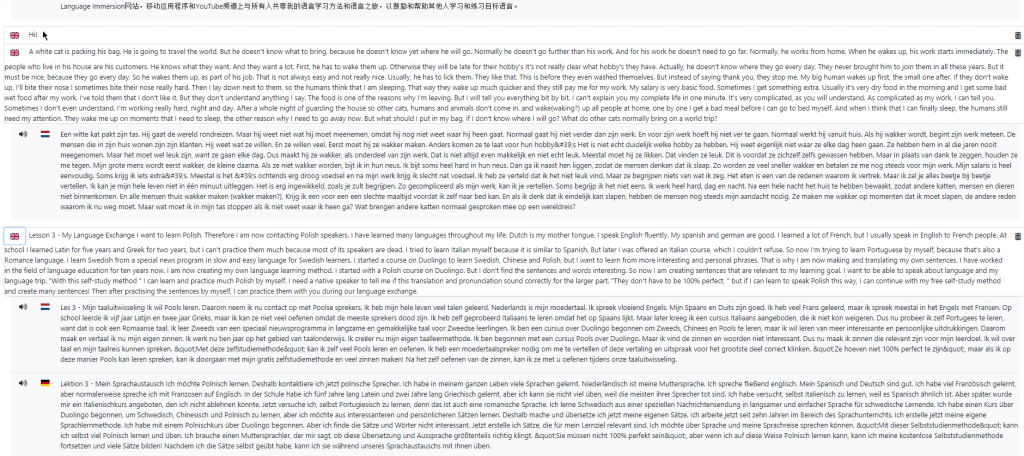
It’s using the highest possible quality machine translations that from tests so far show a natural syntax and word use. Sometimes, it’s not as good with punctuation and accenting, but I am looking at ways to work with that. I’m now running more tests with two example texts that I’ve written to further determine the possible didactic value while at the same time improving the design.
These and follow-up texts are of two kinds: in the form of a typical introduction/presentation and others in story shape. The former (shown above) consist of lines that I’d be using in a typical dialogue, in this first example an introductory meeting, the latter (screenshots below) comprise of useful wording to describe the world around us. I was fed up with unnatural, boring lines without context in language learning apps such as The chair is next to the yellow table followed by It’s raining in the United States. My stories should be fun to read, while users learn at the same time. A future vocabulary builder will introduce possible new words, while formerly introduced words will be repeated in the story at the necessary pace to memorize them.
Both the useful phrases as well as the stories that I’m currently filling the app with are written in normal, natural language, though taking into account the beginner’s level. This doesn’t just make sense as a natural starting point start for many language learners who want to read the stories and learn from the phrases. It’s also the level that I personally would like to reach for multiple languages. Listen to the spoken language from the first story in Dutch.
The other icons at the bottom are currently just there for design purposes and don’t have a functionality behind it yet. But possibly I’ll include nice music, interesting podcasts, useful study material and up-to-date news sources in later versions to practice listening and/while reading. Other future uses could be user interaction about the text, audio and video sources and lessons, to also practice writing and potentially even speaking in order to practice the active components of their target language(s). I love working on this app because of the machine translation technique behind it, the design, the creation of stories and phrases in a didactic way, as well as the linguistic diversity and possible future tasks. But above all, I love being able to just open that app on my phone whenever and wherever I am to read and listen to those phrases and stories in my target languages. So that’s what I’ll be doing next!
